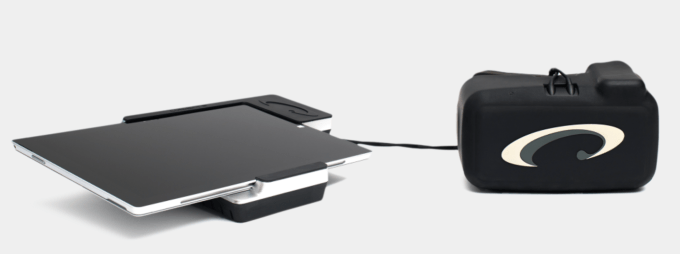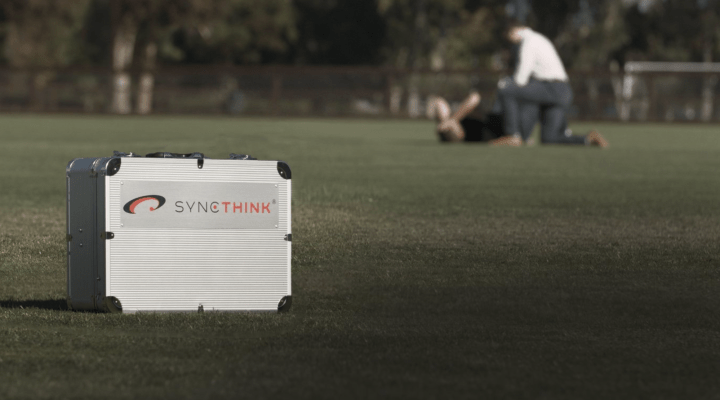Concussion from high-impact sports like football have gathered a great deal of attention over the past decade as studies have emerged detailing some of the long-term impact of repeated head trauma.
SyncThink, which was founded by Dr. Jamshid Ghajar who heads the Stanford Concussion and Brain Performance center, is aiming to discover concussions earlier and with more accuracy than existing solutions, by utilizing virtual reality.
A clear advantage of the company’s EYE-SYNC system is that it’s highly portable, another is that its very private. Numerous instances regarding how concussion tests are being “gamed” by players so that they can stay in the game have been disclosed over the years. Those problems are far less common for SyncThink’s VR headset solution which effectively cuts the person taking the test off from the rest of their environment.

The company uses a DK2 Oculus Rift developer kit outfitted with eye-tracking sensors to give athletes and other concussion-prone individuals access to a quick and effective method of detecting whether a person is suffering from brain trauma.
The headset systems have already been utilized across Stanford University’s athletic programs. While the most visible application of this may be on the sidelines of a football game or other high impact sport, SyncThink believes that there will be a good deal of interest from the military given the device’s compact nature.
Today, the Boston-based company announced that Indiana University will be using the startup’s EYE-SYNC technology for a study on sub-concussive head impacts.
“By tracking sub-concussive impacts combined with various parameters, we have witnessed a glimpse, but plausible hope that some modalities could predict a concussion before it occurs,” said Assistant Professor of Kinesiology at Indiana University, Keisuke Kawata. “It is of my priority to establish brain-injury specific objective markers that to ensure soldiers and athletes’ safety while sustaining highest level of performance.”
